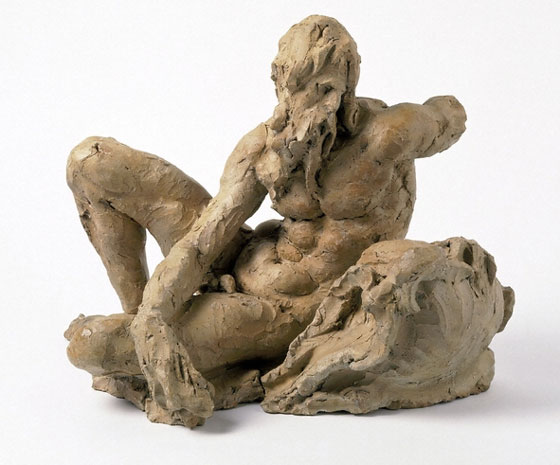Four days from now an exhibition called “Earth and Fire” will open at the Victoria & Albert Museum. Its subject is Italian terracotta sculpture from the early fifteenth to the early nineteenth centuries, i.e. from the time of Donatello to that of Canova. No great fanfares have heralded the event, which is the brainchild of art historian Bruce Boucher, but I suspect that it will be a fascinating exhibition. The show offers an unusual chance to see, in one time and place, a large number of rare and extremely fragile sculptor’s models – three-dimensional “sketches”, worked in clay, which reveal with breathtaking intimacy the thoughts and methods of the artists who created them. One of the most striking examples is reproduced on this page. It is a terracotta study for A River God, done in about 1575, evidently in a bit of a hurry, by the great Florentine sculptor Giambologna.
Charlotte Hubbard, of the V&A’s Conservation Department, kindly agreed to show me Giambologna’s sculpture a couple of weeks ago. I was not previously familiar with it. I found it in the museum’s sculpture restoration studio on a low white table, resting on a piece of cloth to protect the fragile base of the terracotta – an informal-seeming arrangement which only enhanced the immediacy of the piece. Thanks to the remarkably sensitive way in which clay preserves the appearance of softness and malleability, even when fired, Giambologna’s sketch looks astonishingly fresh-made. Being made of such ordinary stuff – just wet clay shaped by a man’s hands, pushed about by his fingers, gouged by his nails – also adds to an almost disconcerting sense of its creator’s proximity. It struck me as looking no older than the clay animals made by my children in pottery class. Giambologna died nearly 400 years...

ITP 99: A River God by Giambologna
10-03-2002

